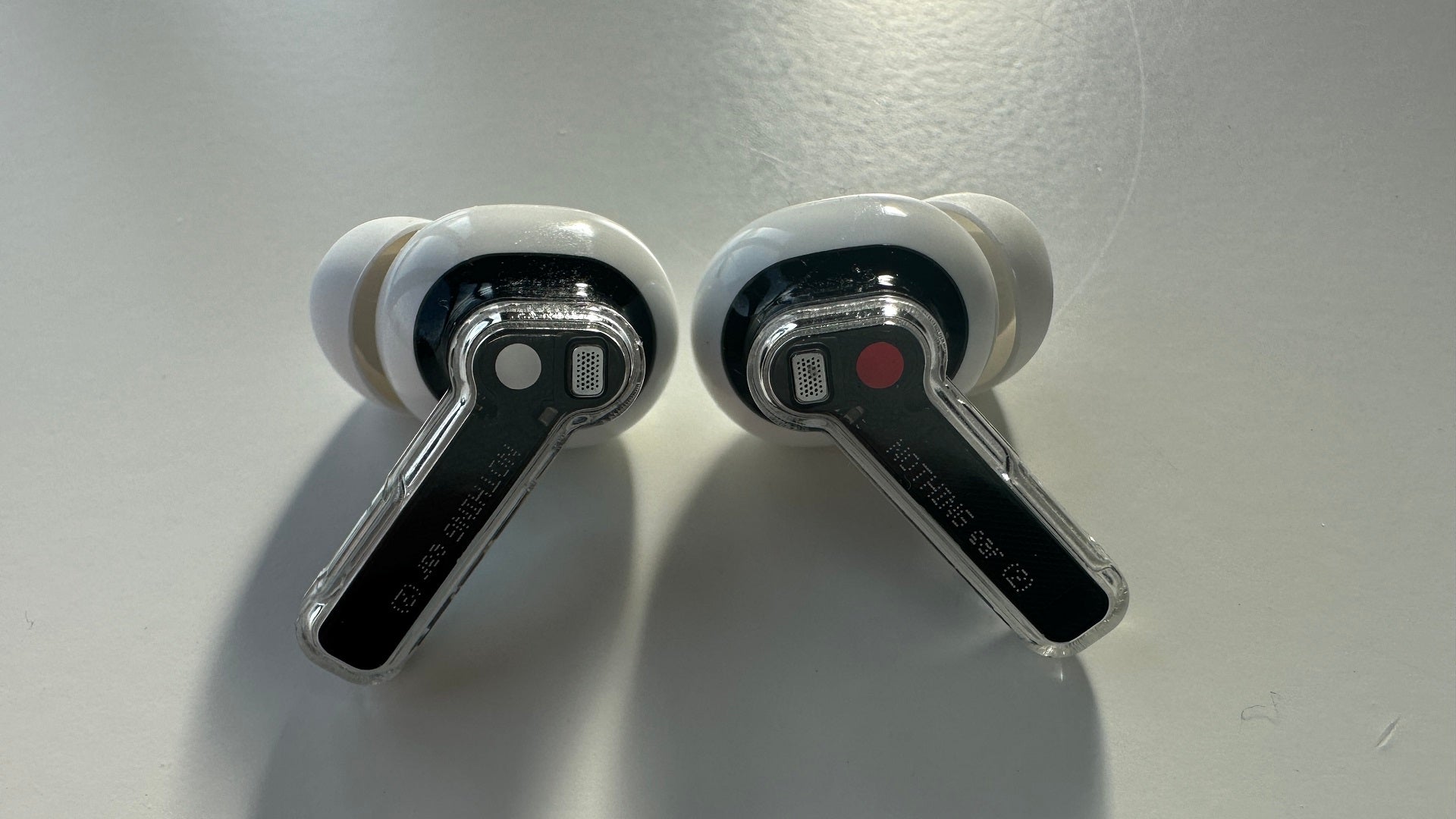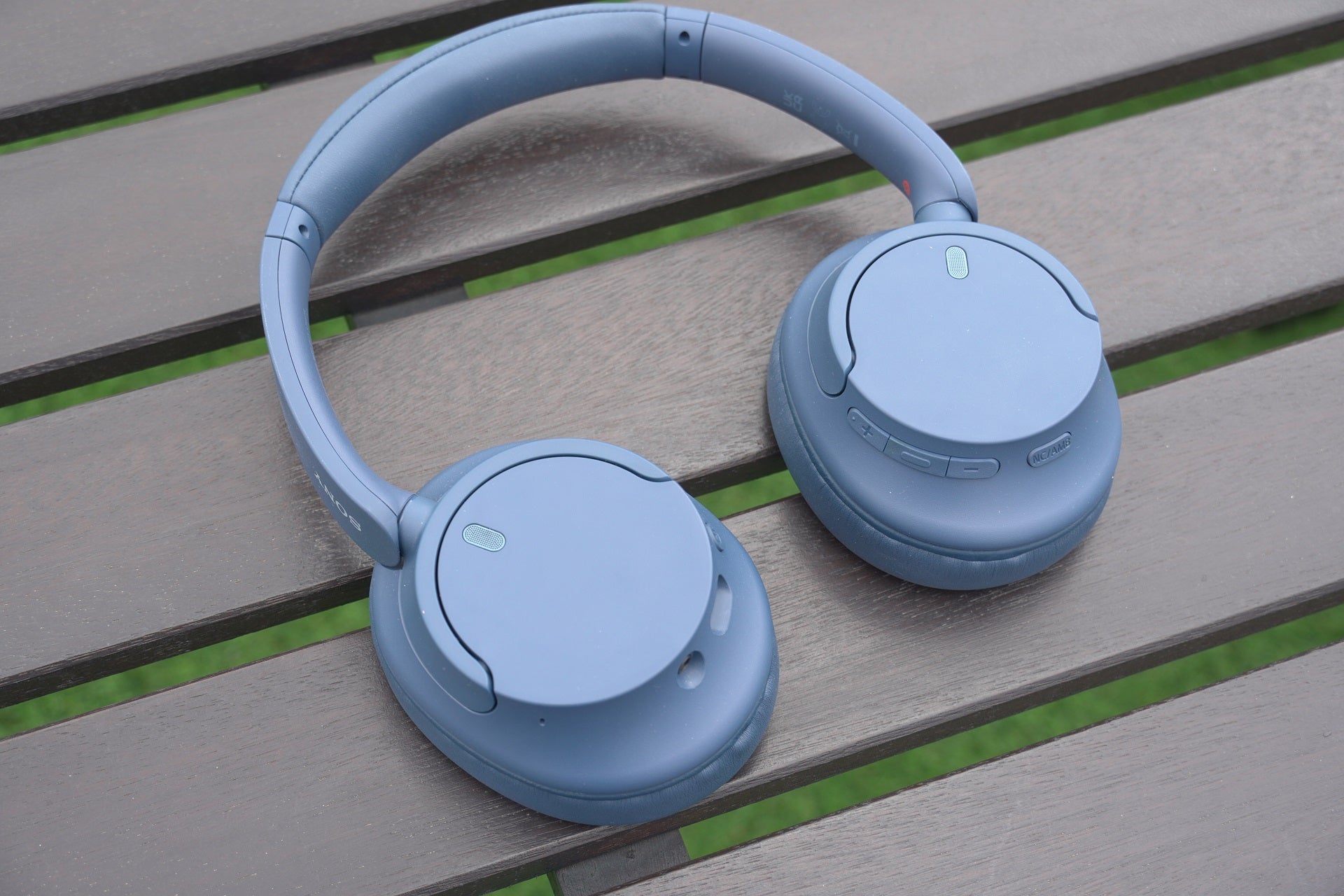Bowers and Wilkins Px8 Review
Are these headphones the new reference standard at their price?
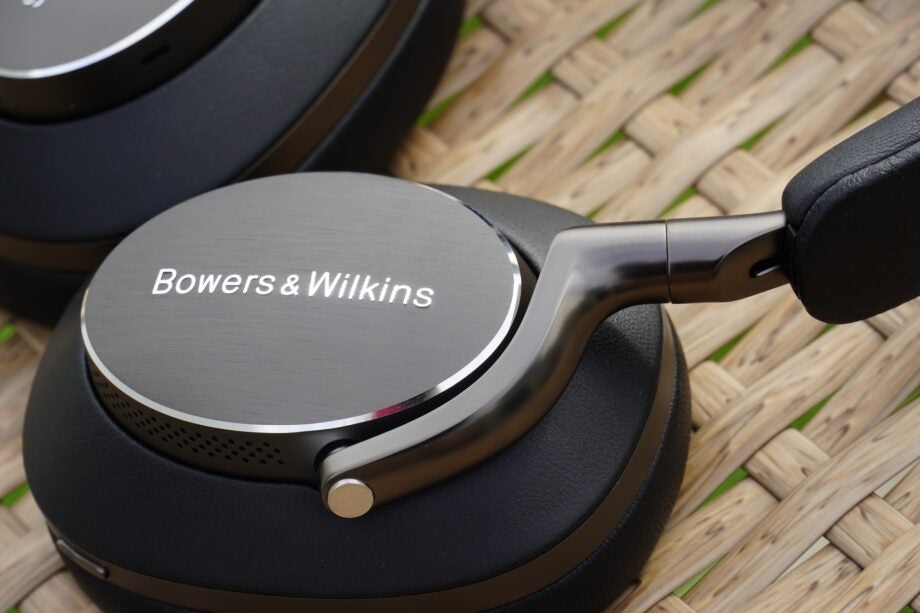

Verdict
Nobody does it better than Bowers & Wilkins for high-end headphones, and the Px8 isn’t just a great-sounding pair, but a delightful experience, with high-calibre audio, effective noise cancellation, very good call quality and superb wireless performance. It’s a terrific luxury set of over-ears.
Pros
- Excellent audio fidelity
- Confident noise cancellation
- Graceful looks
- Tremendous wireless performance
- Very good call quality
Cons
- Expensive
- Imprecise wear sensors
Availability
- UKRRP: £599
- USARRP: $699
- EuropeRRP: €699
- CanadaTBC
- AustraliaRRP: AU$1199
Key Features
- B&W Music appFeatures access to services such as Tidal and Qobuz
- Carbon cone drivers40mm drivers placed at an angle to fire audio to the ear
- BluetoothSupports aptX Adaptive for consistent wireless connectivity
Introduction
It turns out the Bowers & Wilkins Px7 S2 headphones were just the starter to the main course – with the main being an elegant dish in the form of the Px8.
The Px8 is B&W’s flagship pair the brand believes will set the reference standard for performance and design for noise-cancelling headphones.
Heady words and a lofty claim for sure, but the Px7 S2 impressed, and the Px8 is seen as a step up in performance, noise cancellation and price (£599). With the promise of no-holds-barred performance, B&W is leaving few stones unturned in its pursuit of audio excellence. Do we have another contender for the best headphones of 2022?
Design
- Tight, grippy fit
- Great ergonomics
- Physical buttons for operation
Side by side, the Bowers & Wilkins Px7 S2 and Px8 share a similar design language. The bulkiness of the original Px7 has been weeded out, and even though the Px8 is 10g heavier, at 320g, it doesn’t feel as cumbersome to wear.
The earcups take on an oval shape, which is said to assist in presenting a more natural soundstage. The shape and finish of the cast-aluminium arms look splendid, and the Nappa leather texture of the earcups adds to the premium feel.
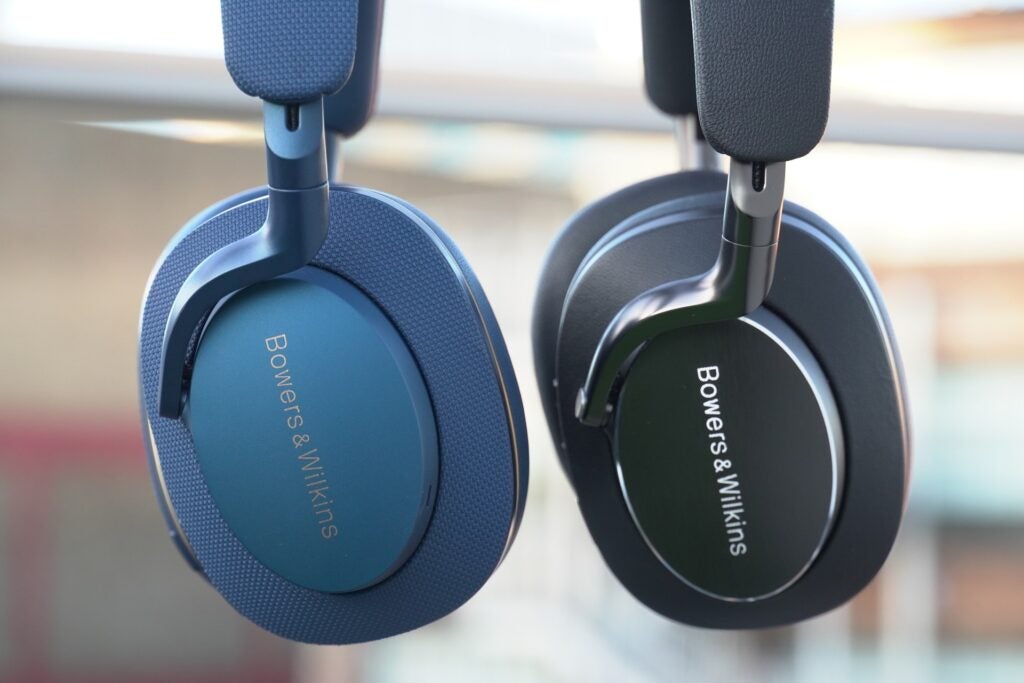
These headphones are available in Black and Tan Leather versions, and the black colourway is reminiscent of the styling on the Black Panther suit. There are also special-edition versions, with Bond 007 (£699) and McLaren racing (£699) models.
The Px8 isn’t identical to the previous release, however, as the angle at which the earcups are tilted is different and the headband is slightly longer and wider in its dimensions. These slight changes add up to a better fit, making these headphones feel more secure and tighter on my head than the Px7 S2 did.
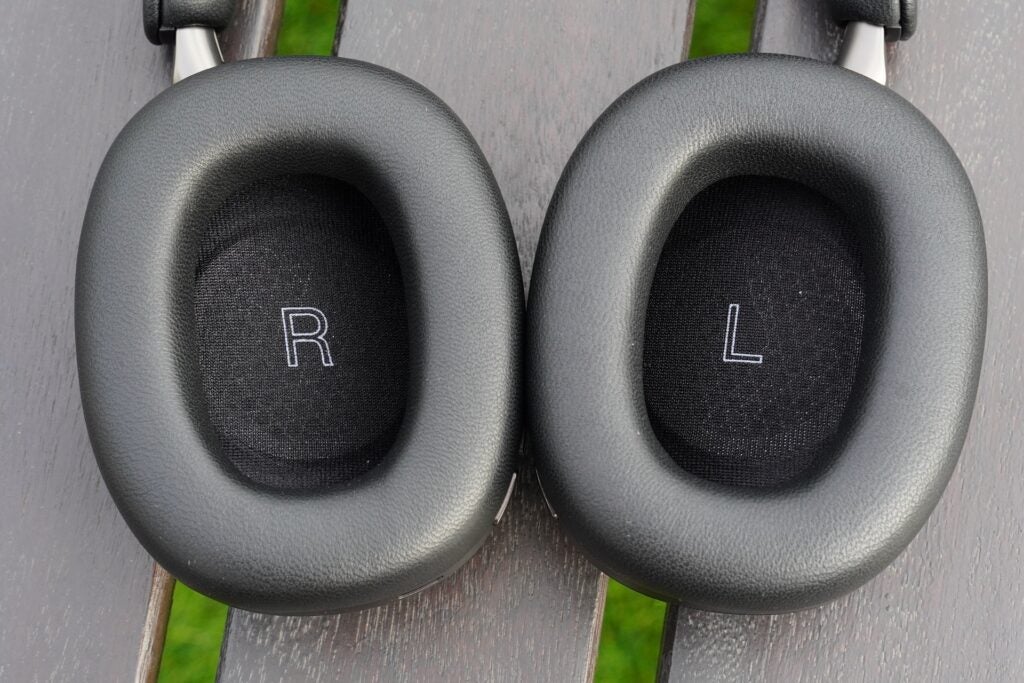
The Px8 set is comfortable enough to wear even if the padding on the earpads is not exactly plush – like with the Master & Dynamic MW75. But the B&W headphones’ fit is tighter, and they are pliable enough in their cushioning against the head. That clamping force is tight but not bothersome. I’ve worn these headphones for many hours and never felt that the pressure was too much over extended periods of wear.
They can’t be collapsed inwards, but there’s a reason for that choice, as it simplifies the design of arm linkages, which gives wind less of a chance to affect the noise-cancelling performance. That may be a regrettable loss for some in terms of portability, but it’s a choice that comes with benefits.
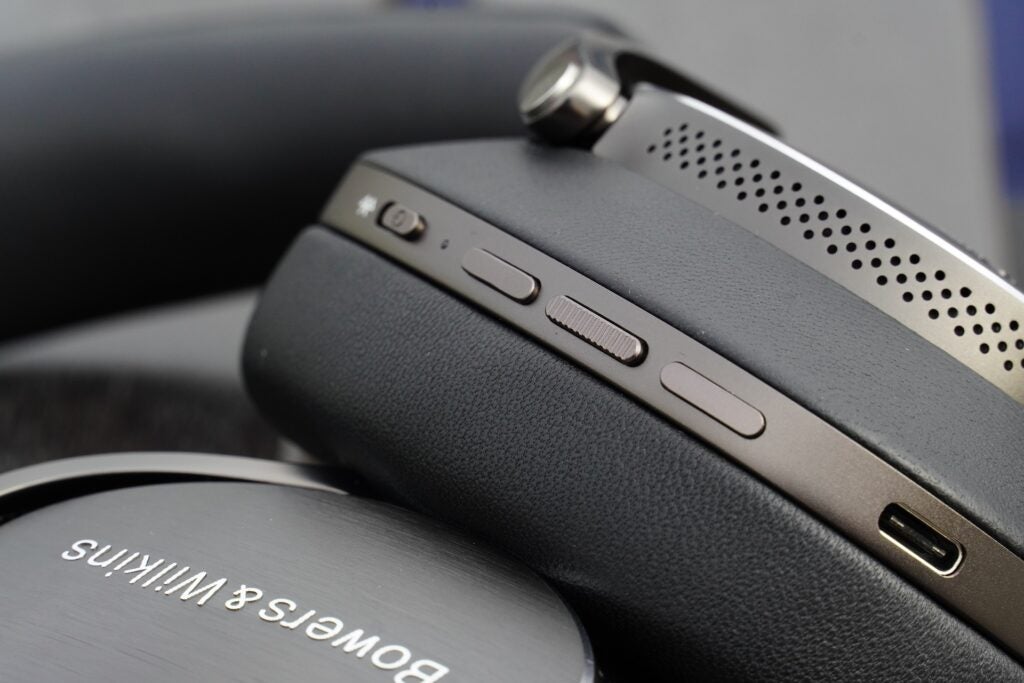
Again, B&W has stuck with physical buttons, and there may be an element of controversy for some in terms of operating these headphones. There’s a switch for power/Bluetooth pairing, where a flick turns the headphones on, and a further push and hold sends the Px8 into its Bluetooth pairing mode.
Either side of the multi-function button (which covers playback/track skipping) are volume buttons, but some complained with the Px7 S2 that it was hard to distinguish between them. I don’t buy it, as the multi-function button has a different texture that makes it easier to locate.
On the left earcup, you’ll find a single button for switching between noise cancelling and transparency modes –operating the Px8 set is a simple experience.
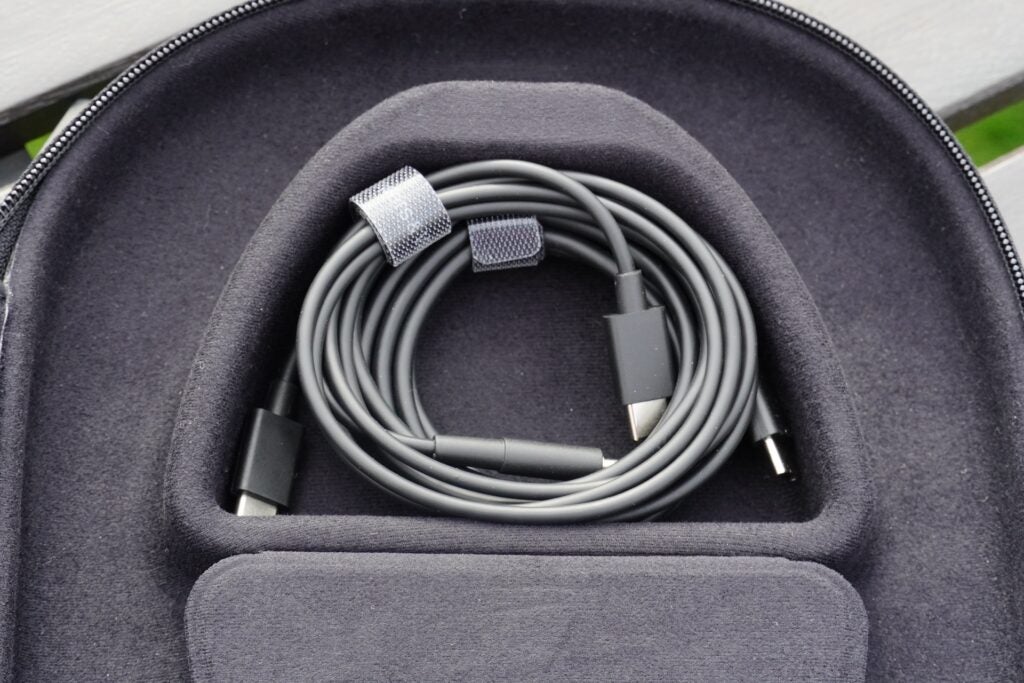
In terms of travel, there’s a hard carry case that mirrors the Px7 S2 in size, with a compartment for cables. The Px8 has a USB-C cable for charging and a USB-C to 3.5mm for wired playback. The only significant difference here is that the zipper tag is made from faux leather. I’ve taken the headphones on several trips across the UK, and the case has survived dogs and the contents of my rucksack with just a few scrapes.
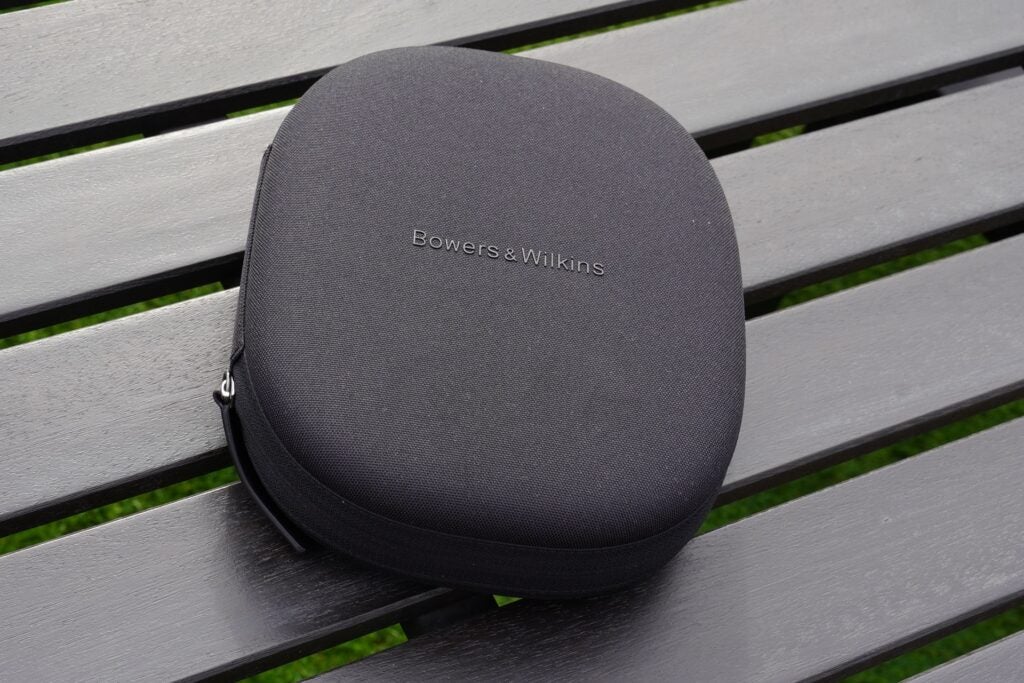
Features
- Confident noise cancellation
- Resilient wireless connection
- Very good call quality
In terms of battery life, there’s no advance on either the Bowers & Wilkins Px7 S2 or Px7 with its 30 hours. B&W has said it’s happy with the battery life and sees no need to extend it. Instead of extended battery life, the company has focused on fast charging.
As a means of comparison, the similarly priced M&D MW75 has 28 hours, while the AirPods Max has 20 hours. If you want more, Sennheiser and Technics have headphones that can go for longer (and for less money), but the Px8 is competitive within its price bracket.
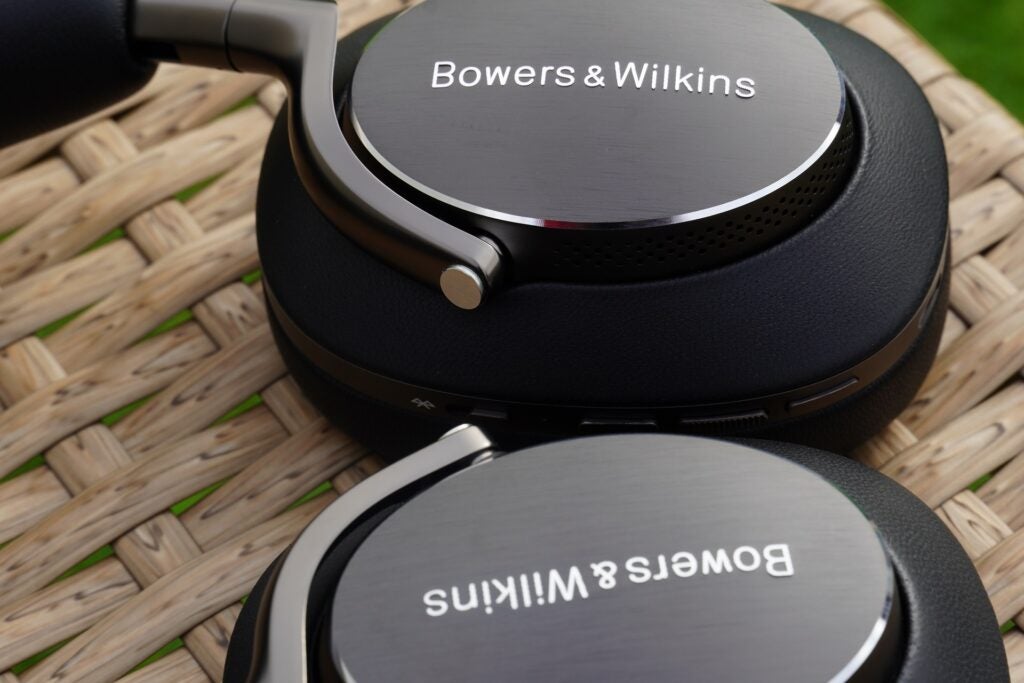
Bluetooth codec support extends from standard SBC to aptX Adaptive – the Px8 set arrived too early for aptX Lossless and the Snapdragon Sound platform. Connectivity with the aptX Adaptive codec has been utterly impressive: aside from a few momentary blips, nothing has thrown the headphones off. Whether I’ve worn them at busy train stations or in crowded areas in central London, they stick to their task with admirable resilience.
Moving on to call quality, it’s another area where this pair impresses. They’re not as good as the Sony WH-1000XM5, but they’re among the best I’ve used this year, with my voice coming across clearly and background noises kept to a minimum.
The Bowers & Wilkins Music app has been updated to stream music directly from apps, so you can control playback within the app, instead of jumping between different apps. Those supported include Tidal, Qobuz, SoundCloud, Last.fm, TuneIn, Deezer and NTS.
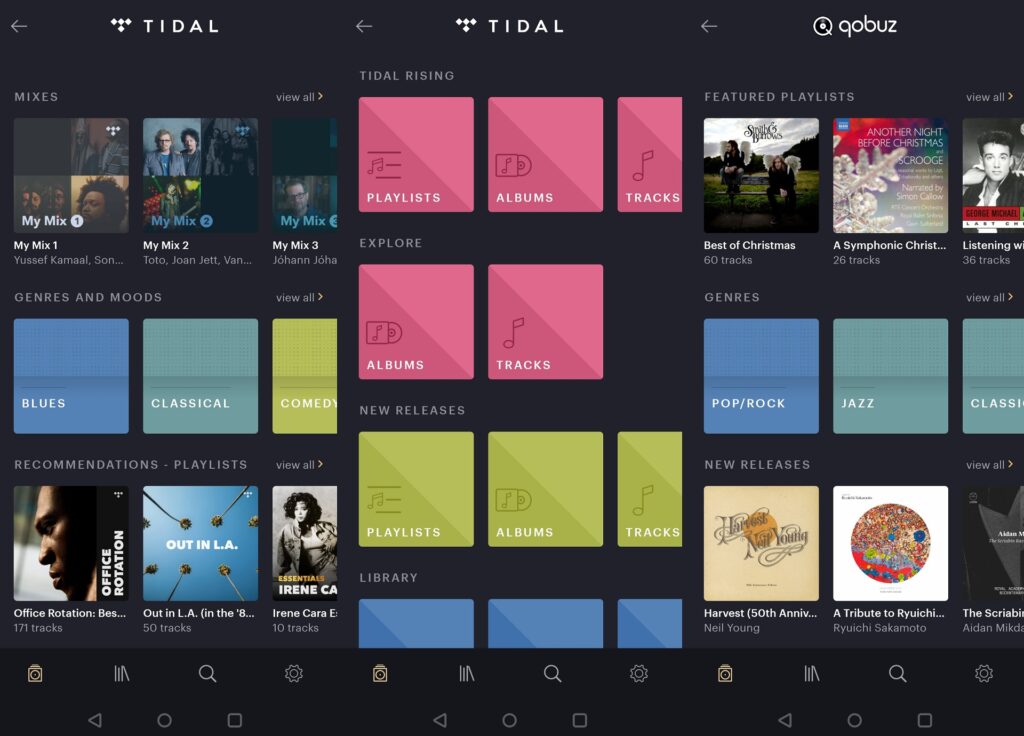
There are icons and graphics for the noise-cancelling mode the headphones are in at the top of the screen along with battery life. Jump to the section of the app that concerns devices (headphones or wireless speakers, such as the Zeppelin), and you’ll find the means to adjust the headphones’ EQ (treble and bass from -6dB to 6dB), manage connections and customise the Quick Action button on the left earcup (Environment Control (i.e., noise cancellation) and Voice Assistant).
New is the option to change the streaming quality of the integrated apps from Reduced Data to Highest, and this can be modified for both mobile and Wi-Fi connections.
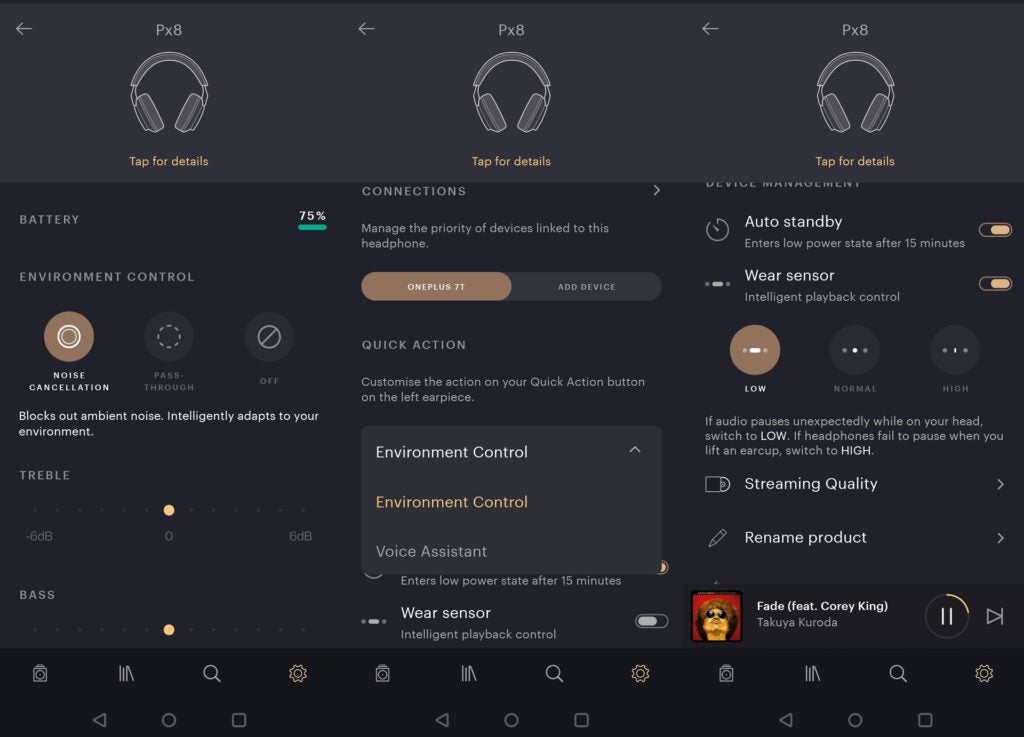
Like with the Px7 S2, B&W has decided audio is its top priority over noise cancellation, making the ANC powerful enough to suppress sounds, but not at the expense of audio quality. That doesn’t mean the Px8 is a pair of shrinking violets, though – far from it.
It’s a discernible upgrade over the Px7 S2 despite employing the same microphone arrangement (four for ANC and two dedicated to call quality). I surmise this increase is mostly to do with how the Px8 fits: the seal around the ears is far tighter than on the S2 model, blocking out more noise with its passive isolating design.
With adaptive ANC on top of that, the amount of noise that makes its way through is much reduced compared with the Px7 S2, and turning your head no longer allows sounds to leak through. The Px8 set is effective at suppressing noise on the underground and more convincing than the MW75 was on Northern, Victoria, Jubilee and Central lines – hushing voices and managing wind noise to acceptable levels.
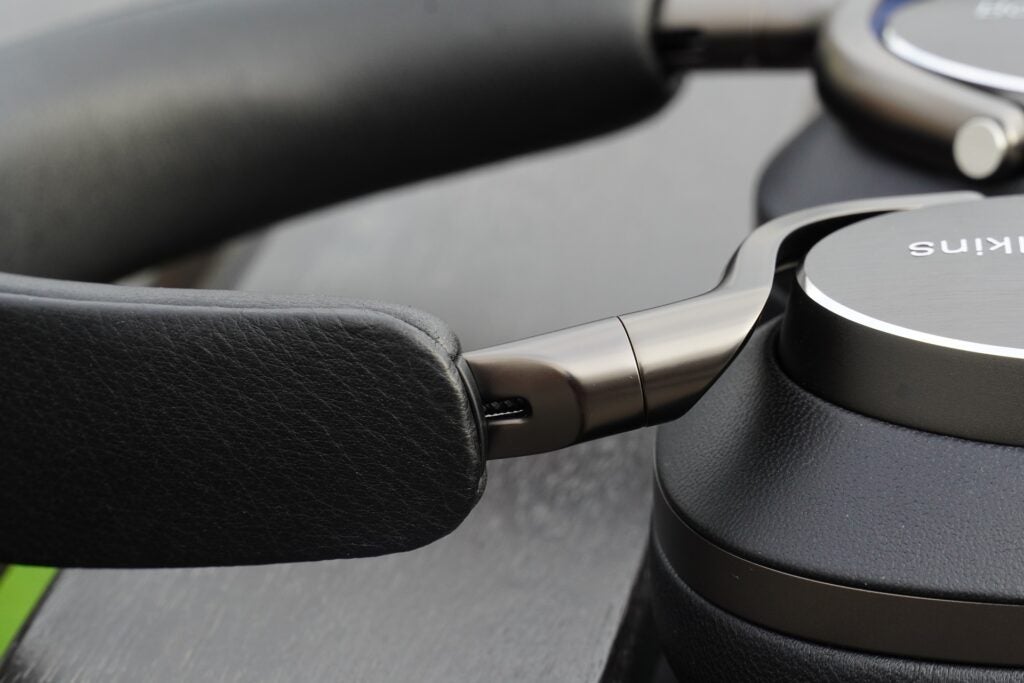
With throngs of people, the Px8 headphones condense the loudness of the crowd into a much more manageable sound – and it’s a similar effect with traffic. The performance is not the eerie silence some pairs from Bose and Sony can manage, but it’s robust enough to usher in a sense of calm wherever you are.
The transparency mode is clear, detailed and natural in the manner it passes through sound – which is really all you need from a transparency mode. Flick it on, and awareness of what’s around you is heightened effectively. There’s only a little noise to contend with, but not much that colours either what you’re listening to or distracts from the surrounding environment.
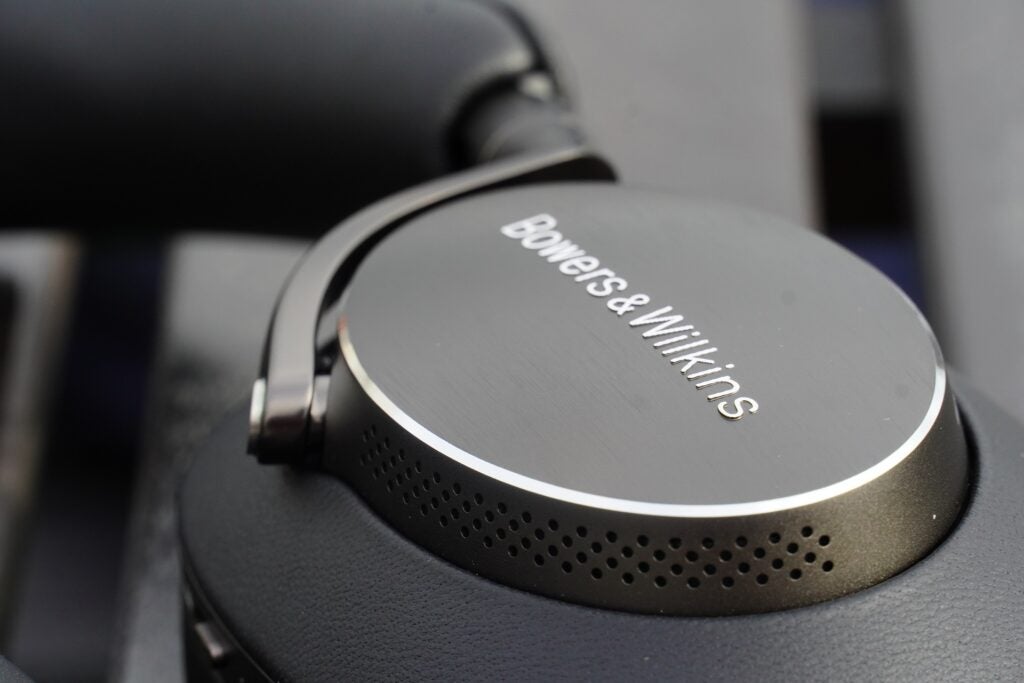
The only issue – and it’s an odd one, I’ll admit – is that there are three modes provided: noise cancellation, passthrough and off. I don’t think you really need the “off” setting. In some ways, it caused confusion for me, as I forgot it was even an option, sometimes leaving the headphones in the off mode instead of switching to noise cancellation.
The final thing to mention is the wear sensor technology. Previously with B&W headphones, there was a lag in detecting whether the headphones were being worn, and they wouldn’t immediately restart playback. That capriciousness seems to have been mostly ironed out, although there are still moments where the act of tilting your head induces the most minor pause, and this happened more than I’d like on the High setting – enough for me to turn it off.
Sound Quality
- Punchy, authoritative bass
- Spacious soundstage
- Great sense of control and definition
There is the not-insignificant matter of the Bowers & Wilkins Px8’s audio performance to consider. Given we’re talking a £200 difference between this pair and the Px7 S2, that sets certain expectations for the former.
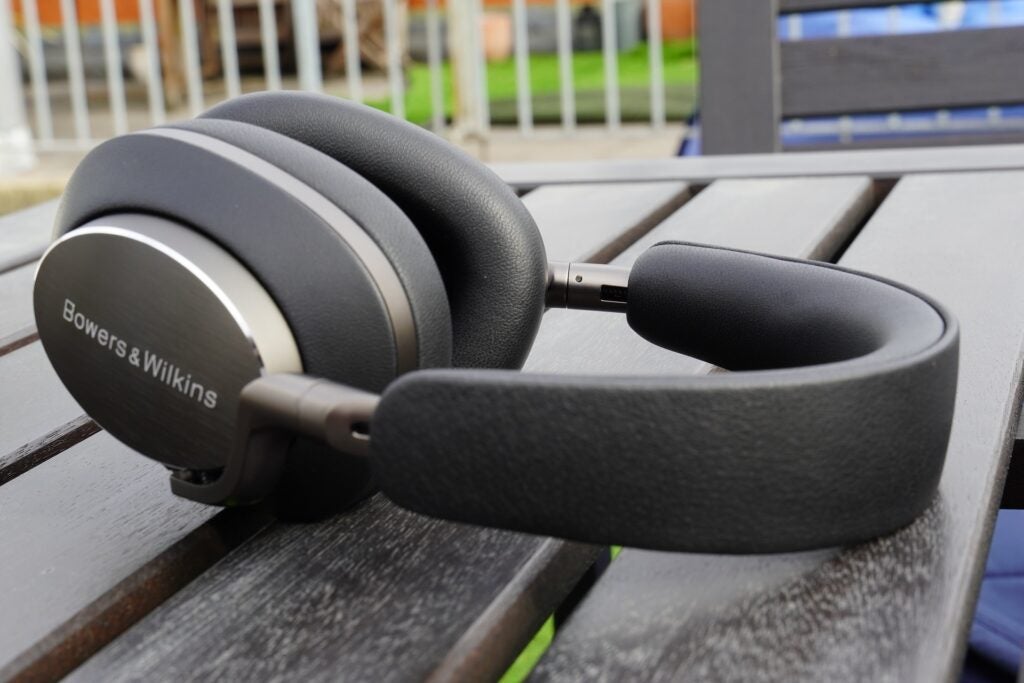
The headline specs are 40mm dynamic full-range carbon cone drive units, which are angled to fire sound towards the ear for a more consistent time alignment and better stereo image. Alongside the new drive unit is a high-resolution 24-bit DSP (digital signal processor) that can play music at a higher quality. You’ll need to subscribe to music services such as Tidal and Qobuz to take advantage of it.
What’s immediately apparent is that the Px8’s soundstage is bigger, wider and more expansive than the Px7 S2’s. In almost all facets of audio, the Px8 is better than its sibling. With Tittle Tattle by Nubiyan Twist and Cherise, the soundstage is grown with a renewed sense of clarity and detail.
Bass frequencies have more definition and punch, the midrange is more open, spacious and sharper. Cherise’s voice is pitched further forward, adding to the depth of the stereo image that’s more pronounced than on the Px7 S2. Those headphones offer a fine listen, but the Px8 ones are an audible progression onwards.
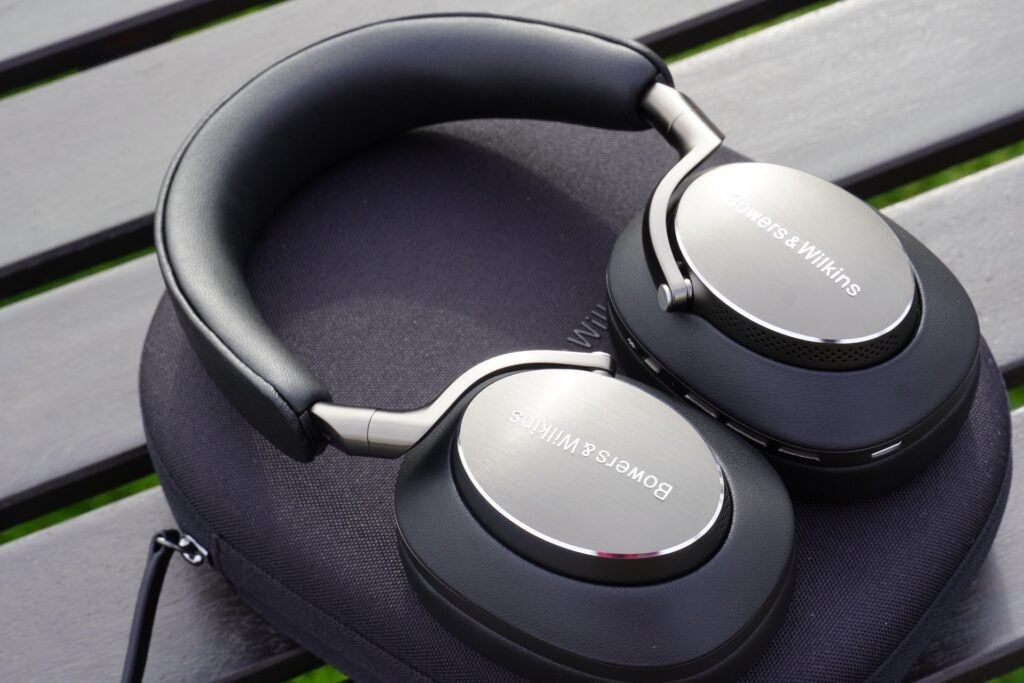
But they are also £200 more expensive, and so they should be better. B&W says it has improved the high-frequency performance over the Px7 S2 and the original Px7, and that stands up. With Immanuel Wilkins’ Grace and Mercy, the tinkling of the piano ivories is brighter than both of those headphones. The original Px7’s treble performance feels rather rolled off and dulled in comparison.
Compared with a pair of cans within the price range – the M&D’s MW75 – the performance difference is more even. With high frequencies, the M&D has the edge – it’s slightly brighter and more distinctive, and the trailing edges of the piano are just a smidge clearer and resolved. The MW75 produces a fair amount of signal noise, which is never prevalent with the Px8. The latter is a clean, precise and dynamic pair of headphones – but so is the MW75, despite the noise. Bass in Easy Life’s Skeletons on both sets is delivered with punch and pace, but the Px8 ekes out more depth with the lower frequencies.
The Px8 – much like the Px7 S2 – exudes a thicker, steely approach to audio. Perhaps it’s the carbon dome drivers, but I hear just some more heft and solidity to the performance. “Harder” isn’t a great word to describe this feeling – “impactful” is a better adjective.

The midrange is fed with lots of detail: male and female vocals are firmly defined, planted in the middle of the soundstage and enclosed within their own bracket of space that offers a tighter focus than some headphones that are vaguer and bigger in how they treat vocals. I prefer the specificity and definition headphones such as the Px8 (and indeed the Sony WH-1000XM5) can provide – even if they don’t sound quite as big.
Tonally, they’re neither too crisp – which can lead to sibilance – nor too rich – which can result in lopsided balance – finding a sweet and (mostly) natural-sounding groove between the two. The frequency range comes across as a balanced, unified whole, and timing is preserved well.

Rhythmically, they convince in communicating shifts in tempo (like with Tinie Tempah’s Simply Unstoppable (Yes Remix)), without losing their sense of definition or sliding towards favoring energy over detail. Whatever is played, the Px8’s reserves of control keep everything in line.
This pair is a great listen, and even more so with a capable music streaming service to feed them. Are these the best Bowers & Wilkins headphones yet? Quite possibly so. They’re certainly some of the best-sounding cans I’ve heard this year.
Latest Deals
Should you buy it?
For their tremendous all-round performance: These headphones sound great, the noise cancelling is improved from the Px7 S2, and the wireless performance is nearly faultless. The Bowers & Wilkins Px8 set has been carved from audio gold.
Your wallet can’t or won’t accept the price: These headphones are not affordable by any means. A group of my friends guessed they would cost about £200. If you think £599 is simply a couple of hundred too much, there are just as adequate alternatives, such as the Sony WH-1000XM5 and the Sennheiser Momentum 4 Wireless.
Final Thoughts
Is the Bowers & Wilkins Px8 a perfect pair? No. Few headphones – if any – are. But its faults are few, and in terms of its approach, it admirably succeeds in delivering high-quality sound.
Some headphones may have the edge in some areas – with noise cancelling in particular – but when it comes to overall detail, clarity and separation applied to tracks, there aren’t many sets from 2022 that can quite match what the Px8 delivers.
High-fidelity sound is at the core of these headphones’ identity, but they are also accomplished noise-cancellers. Their call quality is up there with the best over-ears, they are brilliantly stylish, and the wireless performance is simply fantastic.
They’re tremendous all-rounders, and while the price will put some off from committing, those who can afford these will get outstanding performance. It’s a well-deserved five stars for the Px8.
How We Test
We test every set of headphones we review thoroughly over an extended period of time. We use industry standard tests to compare features properly. We’ll always tell you what we find. We never, ever, accept money to review a product.
Find out more about how we test in our ethics policy.
Tested for two months
Tested with real world use
FAQs
The Px8 have a slightly different design for the headband and earcups, but the main difference is the drive units, the Px8 features 40mm Carbon Cone drivers compared to the Px7’s 40mm Beryllium drivers.


